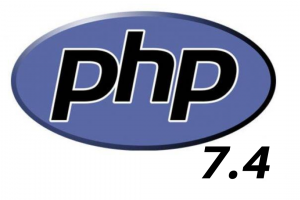DigitalOcean update PHP 7.4 guide by our experts will make the entire process a cake in the walk. Read on to find out more.
At Bobcares, we offer solutions for every query, big and small, as a part of our DigitalOcean Managed Services.
Let’s take a look at how our DO Support Team helped our customers with learning about updating DigitalOcean PHP 7.4.
Guide: DigitalOcean Update PHP 7.4
Today we will take a quick look at how to update PHP 7.4.

- To begin with, we have to check for updates to Ubuntu as well as the repositories at the root with the following command:
$ sudo apt-get update && apt-get upgrade
We have to enter Y when prompted.
- Similarly, enter Y when checking for installed programs and install the updates as required by running this command:
$ sudo apt-get dist-upgrade
- Next, clean packages not in use with this command:
$ sudo apt-get autoremove
- After that, save the list of current PHP settings to a text file via cat packages-first.txt. We will need these later when we install extensions for PHP 7.4.
$ sudo dpkg -l | grep php | tee packages-first.txt
- Then we have to head to the DigitalOcean account and turn off the Droplet on which we plan to update PHP. Next, we must create a snapshot before turning the droplet back on.
- After that, we will add the repository for the new PHP version as seen here:
$ sudo add-apt-repository ppa:ondrej/php # Press enter when prompted.
$ sudo apt-get update
- Next, install the PHP 7.4 basic configuration with this command:
$ sudo apt install php7.4 php7.4-common php7.4-cli
- Then, we will install the required extensions. For instance:
$ sudo apt install php7.4-bcmath php7.4-bz2 php7.4-curl php7.4-intl php7.4-mbstring php7.4-mysql php7.4-readline php7.4-xml php7.4-zip
- Now, it is time to create a second file in order to view the installed extensions and compare it with the first file in step 4. Furthermore, both the files are available in the root of the Droplet via SFTP access. Then install the PHP 7.4 extensions we need:
$ sudo dpkg -l | grep php | tee packages-second.txt
- After that, it is time to go ahead with web server integration with Apache:
$ sudo apt install php7.4-fpm $ sudo a2enconf php7.4-fpm # For Apache only
After the above steps, our Support Team recommends removing all previous PHP versions except the most recent version.
[Need assistance with a different issue? We are available 24/7.]
Conclusion
In brief, our skilled DO Support Engineers at Bobcares demonstrated how to Update PHP 7.4 DigitalOcean. The process involves removing earlier PHP versions except for the latest version.
PREVENT YOUR SERVER FROM CRASHING!
Never again lose customers to poor server speed! Let us help you.
Our server experts will monitor & maintain your server 24/7 so that it remains lightning fast and secure.





Thanks for your help. I had to do one more step to disenable the older version of PHP:
sudo a2dismod php7.2
sudo a2enmod php7.4
then
systemctl restart apache2